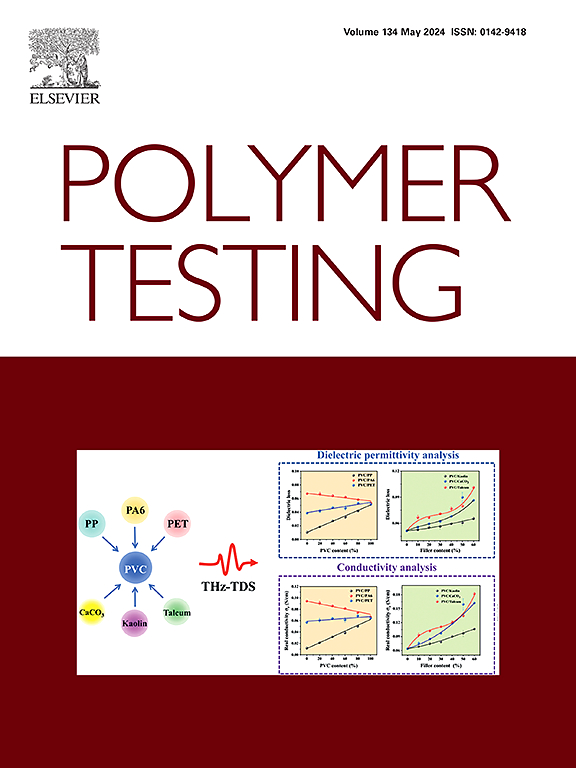Electrospun fibers/nanofibers loaded with phase change materials: Characterization, applications and challenges
IF 6
2区 材料科学
Q1 MATERIALS SCIENCE, CHARACTERIZATION & TESTING
引用次数: 0
Abstract
Thermal energy storage (TES) has emerged as a significant area of interest for various applications. The concept of latent heat storage enables the storage of substantial energy amounts during phase changes under nearly isothermal conditions, using phase change materials (PCMs). PCM-based TES systems encounter challenges like leakage, driving the development of electrospun phase change fibers (EPCFs) via the electrospinning process to improve PCM containment. Achieving successful fabrication and optimal performance of EPCFs necessitates a thorough investigation into their morphology, surface characteristics, crystallinity, stability, mechanical properties, thermal behavior, and TES capacity. Techniques such as scanning electron microscopy (SEM), transmission electron microscopy (TEM), and atomic force microscopy (AFM) are employed for detailed surface characterization of EPCFs. Besides surface properties, the thermal characteristics of EPCFs, including thermal stability, cycle durability, and TES efficiency, significantly impact their practical utility in various applications. Experimental methods like thermogravimetric analysis (TGA) and differential scanning calorimetry (DSC) are utilized to analyze their thermal properties. EPCFs have found diverse applications in textiles, thermos-responsive sensors, biomedical systems, and more, showcasing their versatility. Nonetheless, challenges persist in customizing EPCFs for specific applications, addressing PCM leakage, and ensuring optimal performance. This review article extensively explores the characterization methods, applications, and challenges associated with EPCFs in TES systems, offering insights into future research directions and strategies for overcoming existing challenges.

负载相变材料的电纺纤维/纳米纤维:表征、应用和挑战
热能储存(TES)已成为各种应用的重要领域。潜热存储的概念使得在几乎等温条件下使用相变材料(PCMs)在相变期间存储大量的能量。基于PCM的TES系统遇到了泄漏等挑战,通过静电纺丝工艺推动了电纺丝相变纤维(epcf)的发展,以改善PCM的密封性能。要实现epcf的成功制造和最佳性能,需要对其形态、表面特性、结晶度、稳定性、机械性能、热行为和TES容量进行彻底的研究。采用扫描电子显微镜(SEM)、透射电子显微镜(TEM)和原子力显微镜(AFM)等技术对epcf进行了详细的表面表征。除了表面性能外,epcf的热特性,包括热稳定性、循环耐久性和TES效率,也显著影响其在各种应用中的实际效用。利用热重分析(TGA)和差示扫描量热法(DSC)等实验方法分析其热性能。epcf已经在纺织品、热响应传感器、生物医学系统等领域得到了广泛的应用,展示了它们的多功能性。然而,在为特定应用定制epcf、解决PCM泄漏和确保最佳性能方面仍然存在挑战。本文广泛探讨了epcf在TES系统中的表征方法、应用和挑战,为未来的研究方向和克服现有挑战的策略提供了见解。
本文章由计算机程序翻译,如有差异,请以英文原文为准。
求助全文
约1分钟内获得全文
求助全文
来源期刊

Polymer Testing
工程技术-材料科学:表征与测试
CiteScore
10.70
自引率
5.90%
发文量
328
审稿时长
44 days
期刊介绍:
Polymer Testing focuses on the testing, analysis and characterization of polymer materials, including both synthetic and natural or biobased polymers. Novel testing methods and the testing of novel polymeric materials in bulk, solution and dispersion is covered. In addition, we welcome the submission of the testing of polymeric materials for a wide range of applications and industrial products as well as nanoscale characterization.
The scope includes but is not limited to the following main topics:
Novel testing methods and Chemical analysis
• mechanical, thermal, electrical, chemical, imaging, spectroscopy, scattering and rheology
Physical properties and behaviour of novel polymer systems
• nanoscale properties, morphology, transport properties
Degradation and recycling of polymeric materials when combined with novel testing or characterization methods
• degradation, biodegradation, ageing and fire retardancy
Modelling and Simulation work will be only considered when it is linked to new or previously published experimental results.
 求助内容:
求助内容: 应助结果提醒方式:
应助结果提醒方式:


